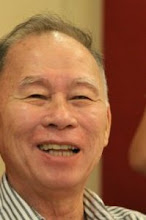Horacio de la Costa S.J.
When I was younger, and Father [Robert] Gannon was younger still - that is to say, a very long time ago - mention of the Philippines inevitably evoked in the American imagination a picture of blue skies and palm-fringed shores, with every palm tree held upright by a Filipino leaning against it, strumming a guitar.
Whether or not it had any relationship to reality, that was the image. One wonders what the American image of the Philippines is today. Perhaps none whatever; simply a blank. Why should there be? Americans have a lot more important things than the Philippines to think about these days. But if image there is, it must be a quite different image from that of former years, if only because the realities are different.
Certainly, despite typhoons, earthquakes, and assorted calamities, the palm trees are still there, as befits the world’s largest exporter of copra. But of the guitar-strumming boys, one has probably gone off to manage a copper mine, another is a Jesuit running for the Constitutional Convention, and a third commands a unit of the New People’s Army, and has a price on his head.
It is still possible for an airline (which shall be nameless) to describe the Philippines in a television advertisement as “a lovely cluster of islands peopled by lovelies,” for there are, admittedly, a few lovelies scattered about. But it is no longer possible, if it ever was, to think of the Philippines as the most carefreee of combinations, a land of the morning where it seemeth always afternoon.



